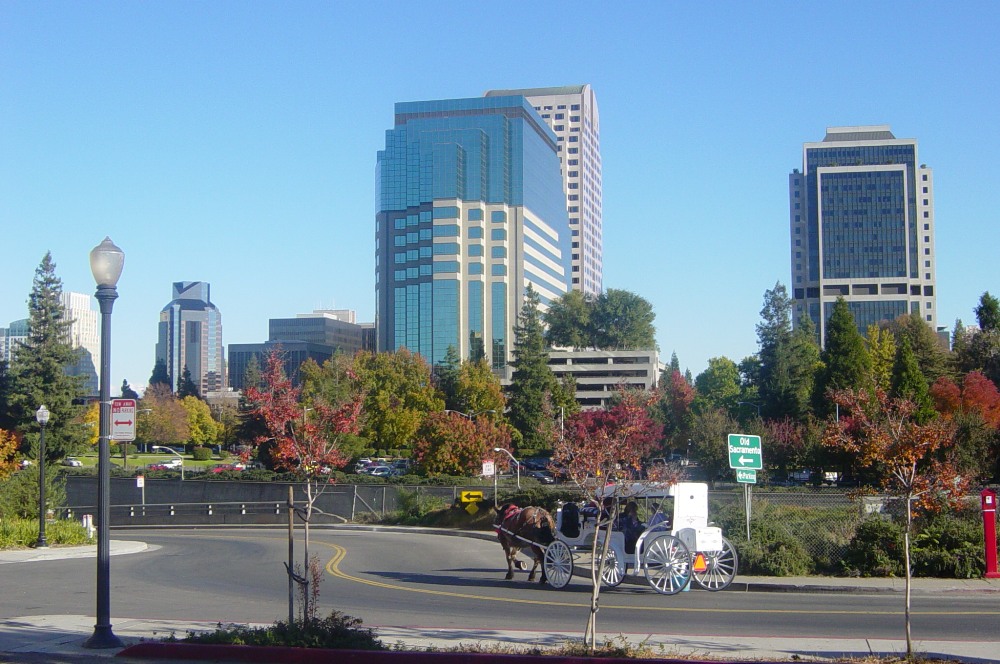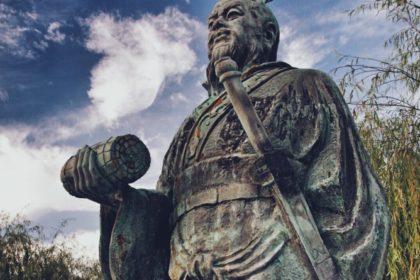Sacramento is the capital city of the U.S. state of California and the seat and largest city of Sacramento County. Take a look below for 20 interesting and fascinating facts about Sacramento, California, United States.
1. Located at the confluence of the Sacramento and American Rivers in Northern California’s Sacramento Valley, Sacramento’s 2020 population of 524,943 makes it the sixth-largest city in California and the ninth-largest capital in the United States.
2. Sacramento is the seat of the California Legislature and the Governor of California, making it the state’s political center and a hub for lobbying and think tanks.
3. It features the California State Capitol Museum.
4. Sacramento is also the cultural and economic core of the Greater Sacramento area, which at the 2020 census had a population of 2,397,382, the fifth-largest metropolitan area in California.
5. Before the arrival of the Spanish, the area was inhabited by the historic Nisenan, Maidu, and other indigenous peoples of California. Spanish cavalryman Gabriel Moraga surveyed and named the Río del Santísimo Sacramento (Sacramento River) in 1808, after the Blessed Sacrament, referring to the Eucharist in the Catholic Church.
6. In 1839, Juan Bautista Alvarado, Mexican governor of Alta California, granted the responsibility of colonizing the Sacramento Valley to Swiss-born Mexican citizen John Augustus Sutter, who subsequently established Sutter’s Fort and the settlement at the Rancho Nueva Helvetia.
7. Following the American Conquest of California and the 1848 Treaty of Guadalupe-Hidalgo, the waterfront developed by Sutter began to be developed, and incorporated in 1850 as the City of Sacramento.
8. Sacramento is the fastest-growing major city in California, owing to its status as a notable political center on the West Coast and as a major educational hub, home of California State University, Sacramento and University of California, Davis. Similarly, Sacramento is a major center for the California healthcare industry, as the seat of Sutter Health, the world-renowned UC Davis Medical Center, and the UC Davis School of Medicine.
9. It is a tourist destination, featuring the California Museum, Crocker Art Museum, California State Railroad Museum, California Hall of Fame, and Old Sacramento State Historic Park. Sacramento International Airport, located northwest of the city, is the city’s major airport.
10. Sacramento is known for its evolving contemporary culture, and is dubbed the most “hipster city” in California. In 2002, the Harvard University Civil Rights Project conducted for Time magazine ranked Sacramento as “America’s Most Diverse City”.
11. Nisenan (Southern Maidu), Modoc, and Plains Miwok Native Americans lived in the area for perhaps thousands of years.
12. Unlike the settlers who would eventually make Sacramento their home, these Native Americans left little evidence of their existence.
13. Their diet was dominated by acorns taken from the plentiful oak trees in the region and by fruits, bulbs, seeds, and roots gathered throughout the year.
14. In 1808, the Spanish explorer Gabriel Moraga encountered and named the Sacramento Valley and the Sacramento River. A Spanish writer with the Moraga expedition wrote: “Canopies of oaks and cottonwoods, many festooned with grapevines, overhung both sides of the blue current. Birds chattered in the trees and big fish darted through the pellucid depths.
15. The air was like champagne, and (the Spaniards) drank deep of it, drank in the beauty around them. “¡Es como el sagrado sacramento! (It’s like the Blessed Sacrament.)” The valley and the river were then christened after the “Most Holy Sacrament of the Body and Blood of Christ,” referring to the Catholic sacrament of the Eucharist.
16. John Sutter, Sr. first arrived in the area on August 13, 1839, at the divergence of the American and Sacramento Rivers with a Mexican land grant of 50,000 acres (20,000 ha). The next year, his party and he established Sutter’s Fort, a massive adobe structure with walls 18 feet (5.5 m) high and three feet (0.91 m) thick.
17. Representing Mexico, Sutter Sr. called his colony New Helvetia, a Swiss-inspired name, and was the political authority and dispenser of justice in the new settlement. Soon, the colony began to grow as more and more pioneers headed west. Within just a few short years, Sutter Sr. had become a grand success, owning a 10-acre (4.0 ha) orchard and a herd of 13,000 cattle. Fort Sutter became a regular stop for the increasing number of immigrants coming through the valley. In 1847, Sutter Sr. received 2,000 fruit trees, which started the agriculture industry in the Sacramento Valley. Later that year, Sutter Sr. hired James Marshall to build a sawmill so he could continue to expand his empire, but unbeknownst to many, Sutter Sr.’s “empire” had been built on thin margins of credit.
18. In 1848, when James W. Marshall discovered gold at Sutter’s Mill in Coloma (some 50 mi or 80.5 km northeast of the fort), numerous gold-seekers came to the area, increasing the population. In August 1848, Sutter Sr.’s son, John Sutter Jr., arrived to assist his father in reducing his indebtedness. The Sutters struggled to contain the effects of thousands of new gold miners and prospectors in the area, many who squatted on unwatched portions of the vast Sutter lands, or stole various unattended Sutter properties or belongings. For Sutter, his employee’s discovery of gold in the area turned out to be a bane.
19. By December 1848, John Sutter Jr., in association with Sam Brannan, began laying out the City of Sacramento, 2 miles (3.2 km) south of his father’s settlement of New Helvetia. This venture was undertaken against the wishes of Sutter Sr., but the father, being deeply in debt, was unable to stop it. For commercial reasons, the new city was named “Sacramento City” after the Sacramento River. Sutter Jr. and Brannan had United States Army Captain William H. Warner assigned to draft the official layout of the city, which included 26 lettered and 31 numbered streets (today’s grid from C St. to Broadway and from Front St. to Alhambra Blvd.) Relations between Sutter and his son became embittered after Sacramento became an overnight commercial success.
20. Residents of Sacramento adopted a city charter in 1849, which was recognized by the state legislature in 1850. Sacramento is the oldest incorporated city in California, incorporated on February 27, 1850.




